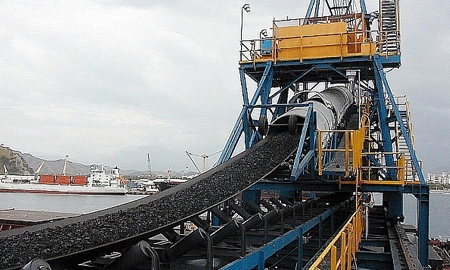
Founded by 60 firms, La Sociedad Portuaria de Santa Marta (SPSM) on the northern Colombian coast, is a mixed company that began functioning in 1993. The founders included banana and ship-building organizations, the Department of Magdalena, the District of Santa Marta, and other businessmen. That institutional support allowed it to obtain authorization from the Ports Superintendent’s Office to arrange itself as a port operator.
The port of Santa Marta began operating as an agro-industry, and its area of influence consists of two banana-growing zones: Urabá and the Department or province of Magdalena. The banana growers, worried at that time about the logistics of the exporting of their products, took part in the concession of Santa Marta as a port and became its only important clients, a condition that won them the awarding of the tender.
The SPSM in recent years has tended to expand, and has become characterized as being a specialized port divided into three large sub-terminals: a sub-terminal of container loading, a sub-terminal for solids and liquids in bulk, and a specialized sub-terminal to handle coal, as well as the area used for general loading. The port’s environmentally friendly management is highlighted in national and international forums.
Santa Marta’s coal operating company, Carbosán, is located in the SPSM and operates in the patios 4 and 5 of dock 7. The company was established on November 3, 2000, with the largest shareholding in SPSM and Carboandes S.A. Carbosán is the result of combining experiences and improving the applied technology in the handling of coal. This company is a 100% operator of coal in bulk, and the initial capital with which the company was formed is totally private.
Carbosán began operations on July 1, 2003, offering a system of unloading of technical trucks with revolving platforms, covered conveyor belts and a radial stacker used for direct loading to a ship through a closed shot. The first motor ship was Artemon with a Maltese flag, from Jacksonville, USA, bound for Avonmouth, UK, belonging to the client Carbones Colombianos del Cerrajon S.A., which arrived at Santa Marta on July 11, 2003, at 13:00. The mooring occurred on July 15 at 15:55, and the ship began operations on the same day loading a total of 34,699.34 metric tons of coal 50 x 200 mm and set sail on July 22 at 01:30.
Carbosán employs 562 people directly and close to 8,000 people indirectly. We currently have a latest generation technology focused always on the protection and conservation of the environment. We are a Port characterized by protection of the dry forest that surrounds us and the biodiversity that exists in our zone of operations. Proof of this is that in our loading area you can find the last piece of coral in the entire Santa Maria Bay, which we check frequently to guarantee its permanence.
We have a capacity to store 7 million tons of coal a year, but beyond our operative efficiency we assume environmental protection as a high corporate value. We have a modern system of direct coal loading where our charger enters as far as the bottom of the ship to deposit the mineral. Santa Marta has the only public service port in the country with this modern system that is compatible with the environment. In addition, we have a modern system of constant moisturizing with chemicals at the same time as the mineral is unloaded, and conveyor belts totally encapsulated during the ship’s journey. We measure our water footprint when we re-use rain water that we receive from the city to use it in watering green zones, and all of our operation and our equipment have electric lights, thereby reducing CO2 emissions as we do not use any fuel nor any fuel derivatives. This technology means that we are a model of great success at a national and international level in the responsible management of coal. Recently we were the only Latin American port invited to speak at a conference of the International Agency of Ports and Harbors (IAPH), which was held in Israel, attended by 230 global port authorities.
The successful case of environmental coal handling
Our operation means we have been awarded world certificates for quality ISO 9001 and environment ISO 14001, in addition to an honorable mention in 2007 from the American Association of Port Authorities (AAPA), which classified our operation as responsible with our surroundings, giving us the recognition that in our terminal we carry out operations that are trustworthy in the application of the best environmental practices.
Carbosán presents itself as a leader at national and international level in coal exports. Through private initiative, with an investment that reaches US$109 million, Carbosán is trying to reactivate rail transport to the Port of Santa Marta with the idea of inter-connecting our capital Bogotá, the country’s main center of consumption, with the port installations. This project will increase the transport and coal storage capacity to 9 million tons a year, besides giving the city the opportunity of having a local train service for passengers. In that way, they will become more competitive in the face of new challenges imposed by foreign trade.
1 COMMENT
Congrats on being named the first eco-port of Latin America!! well done